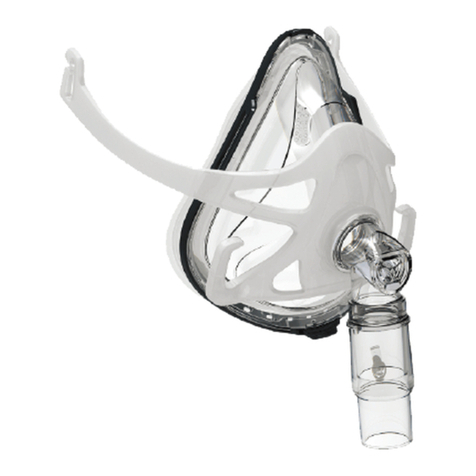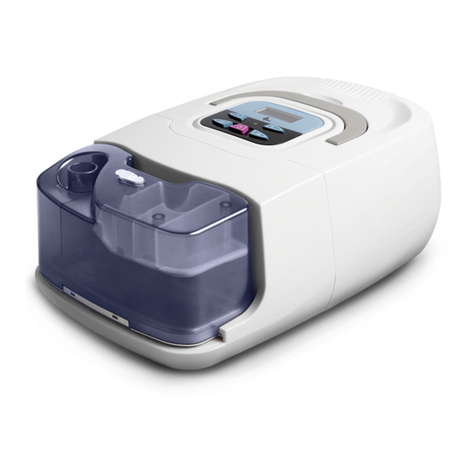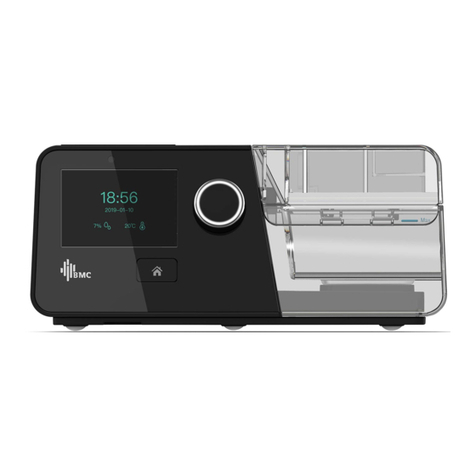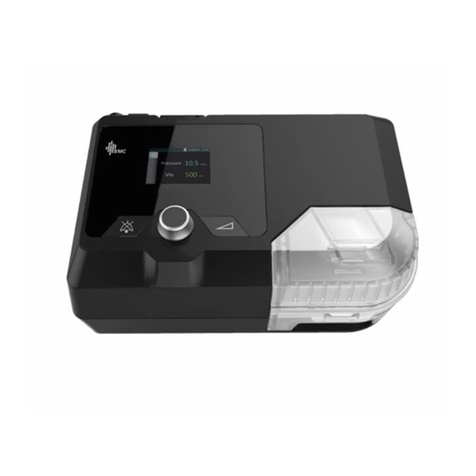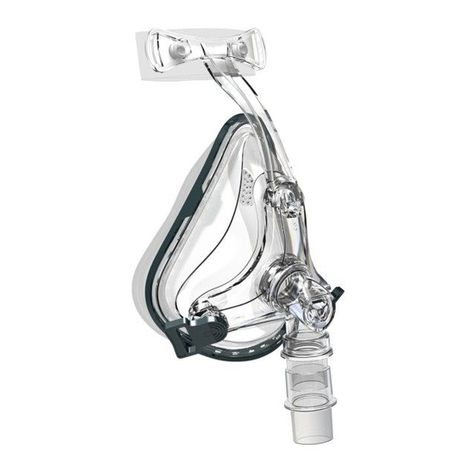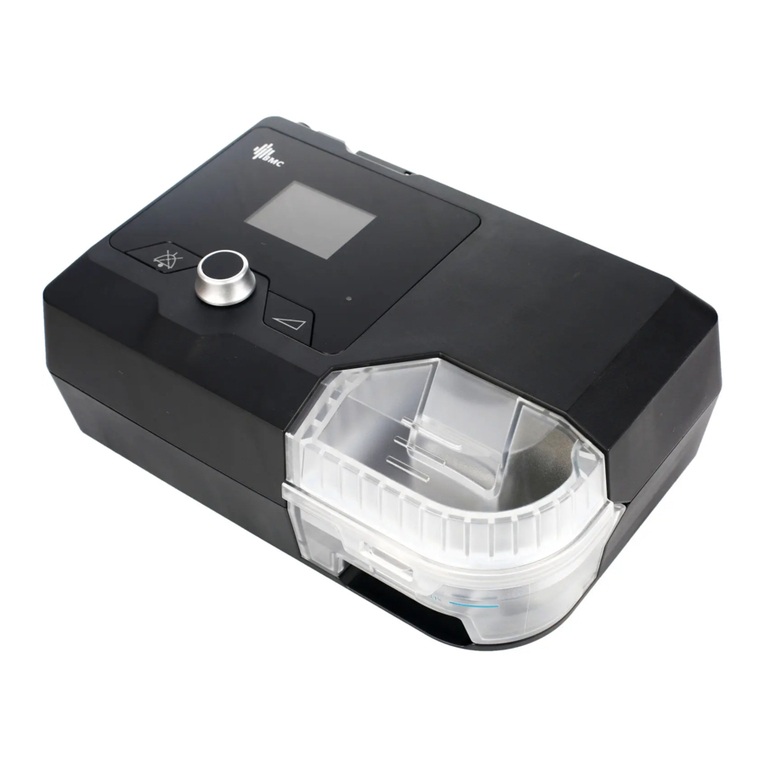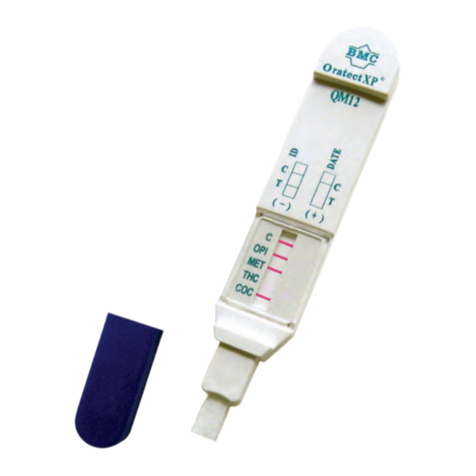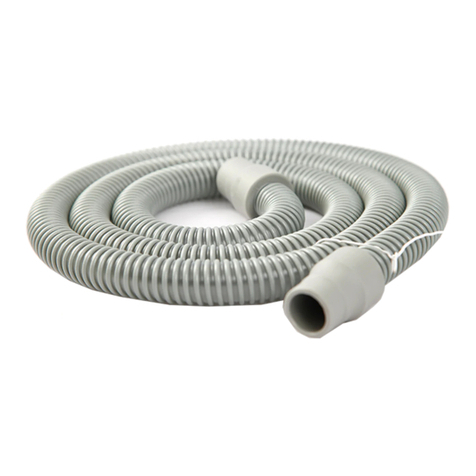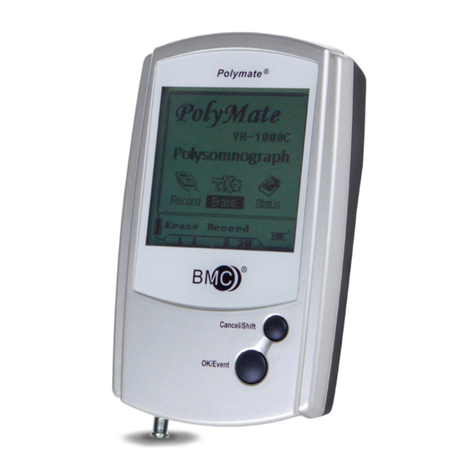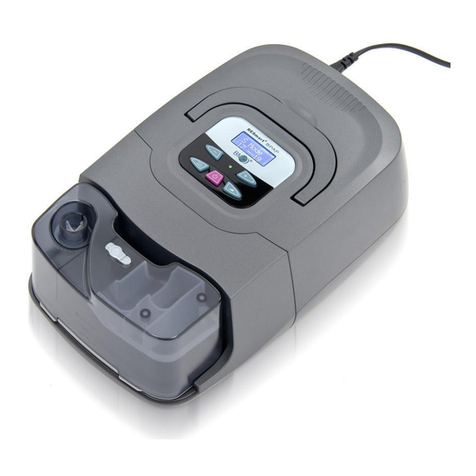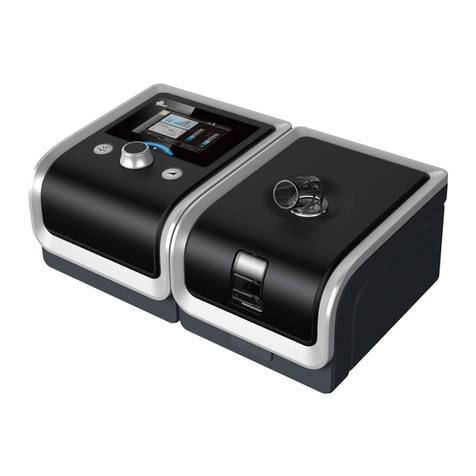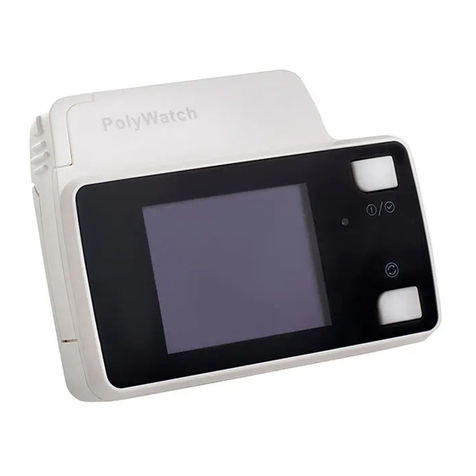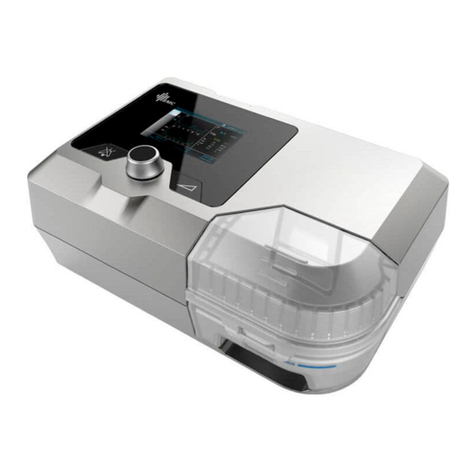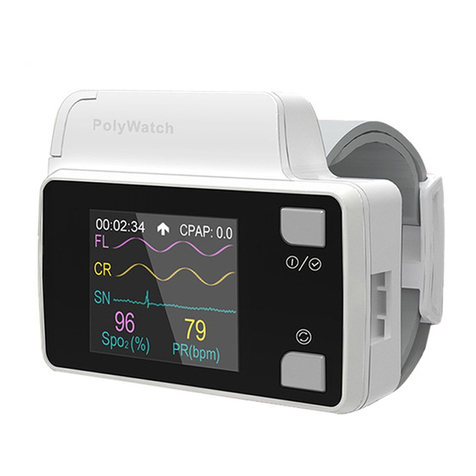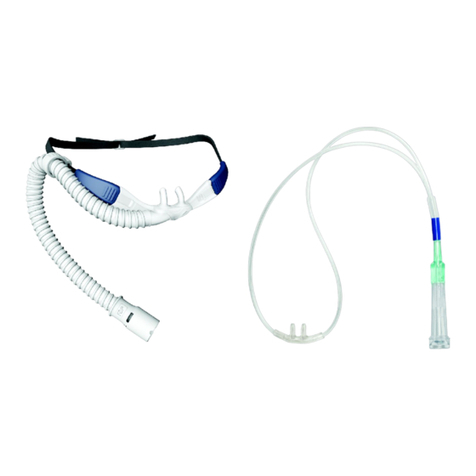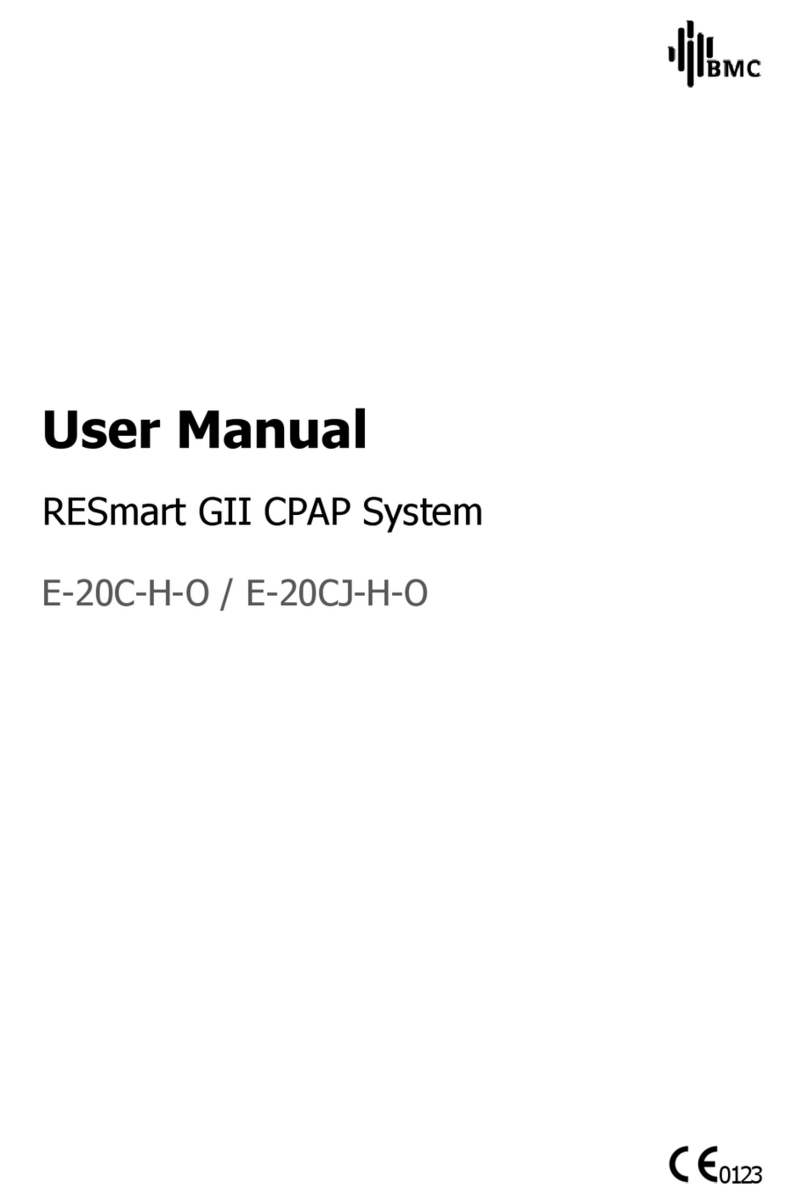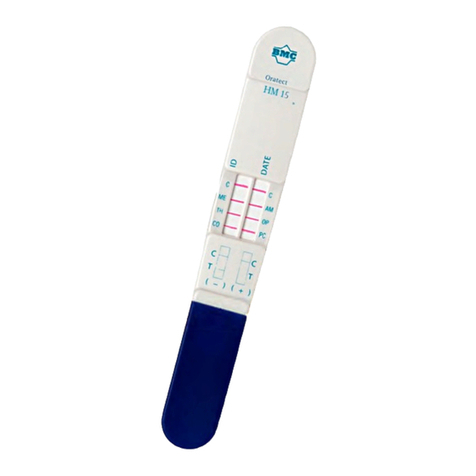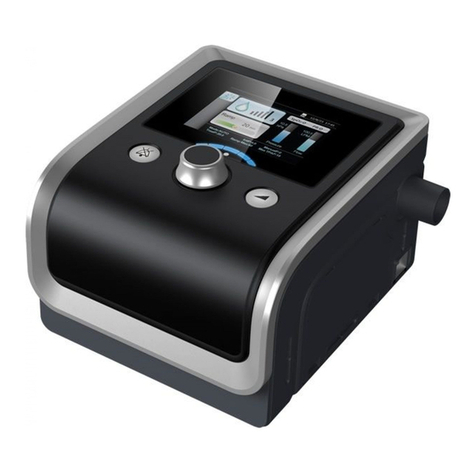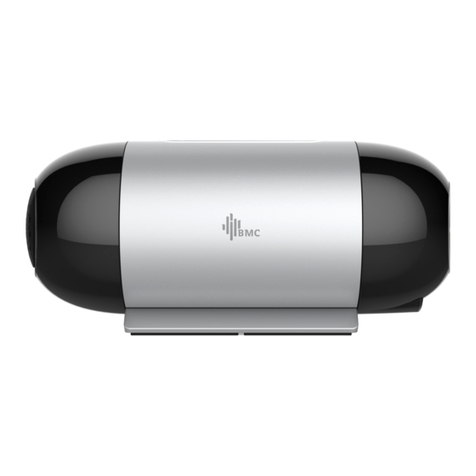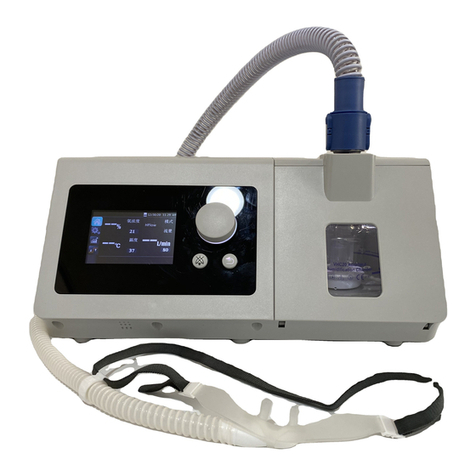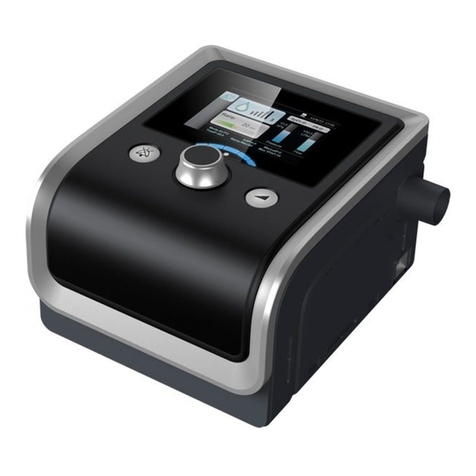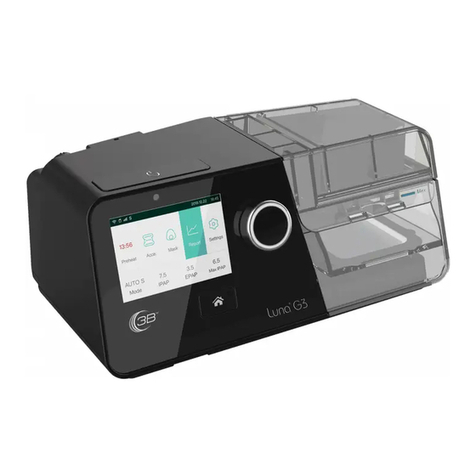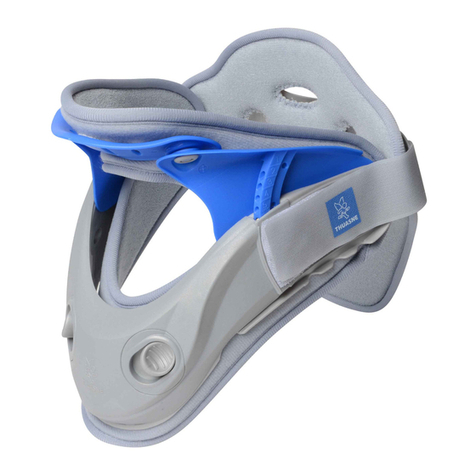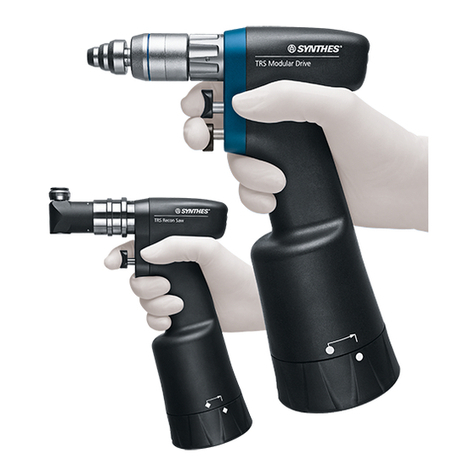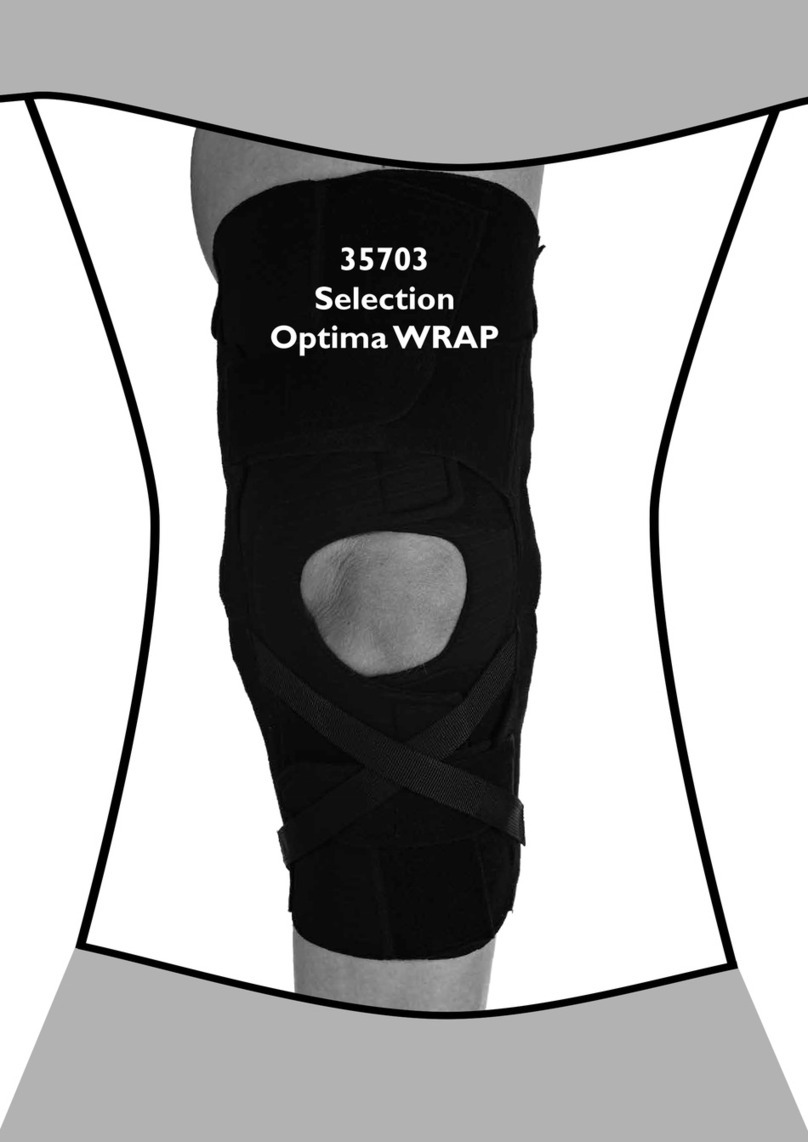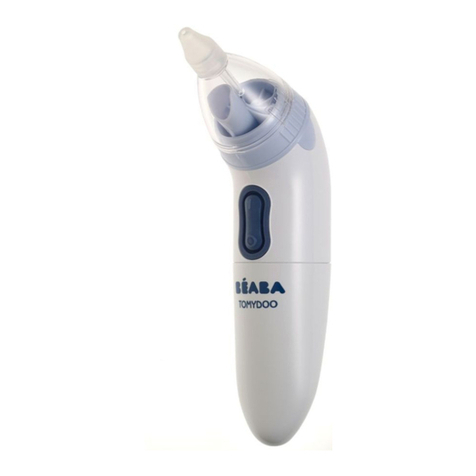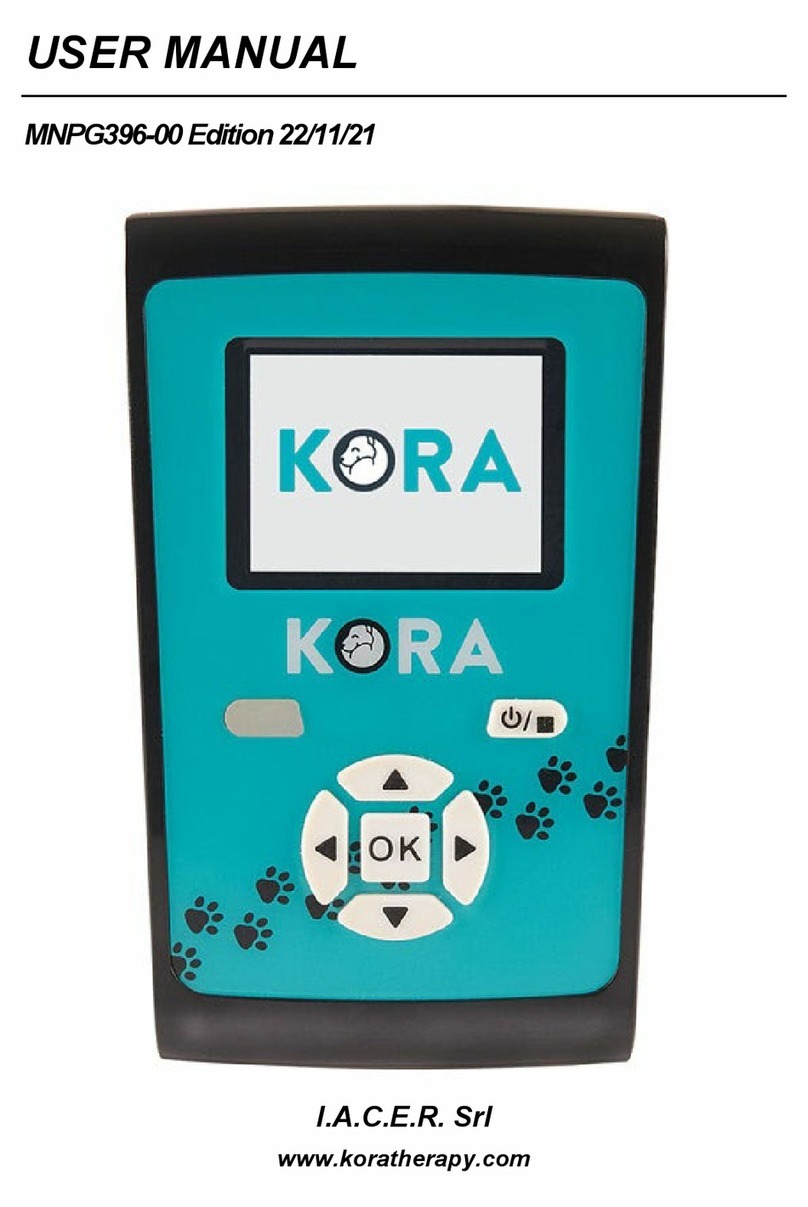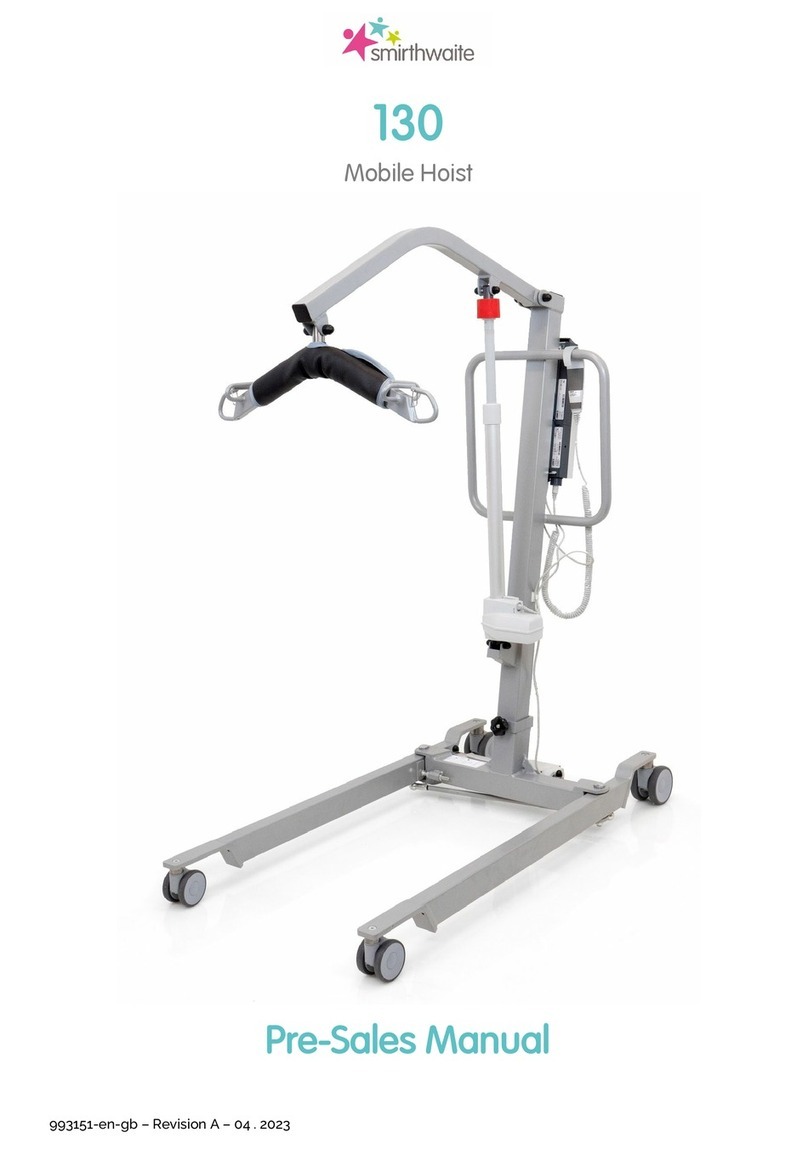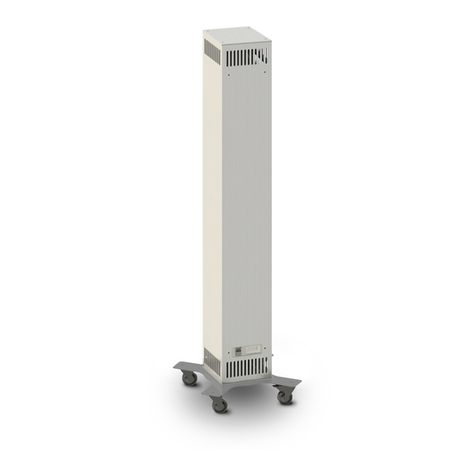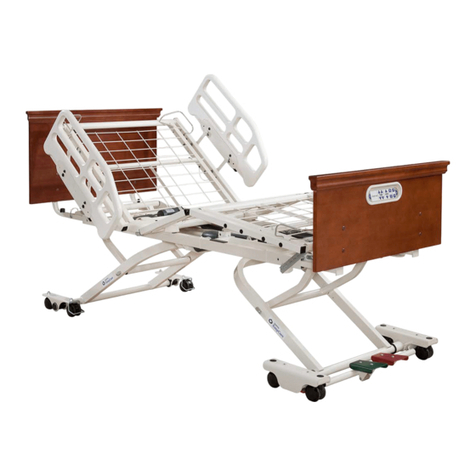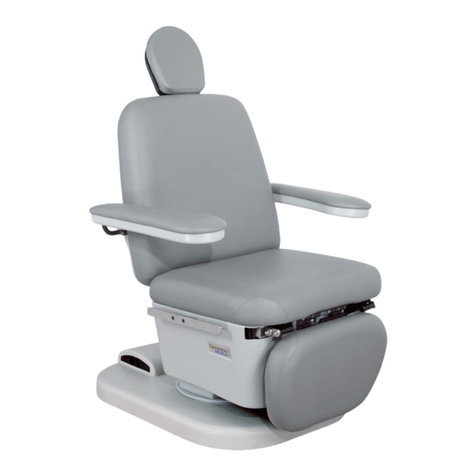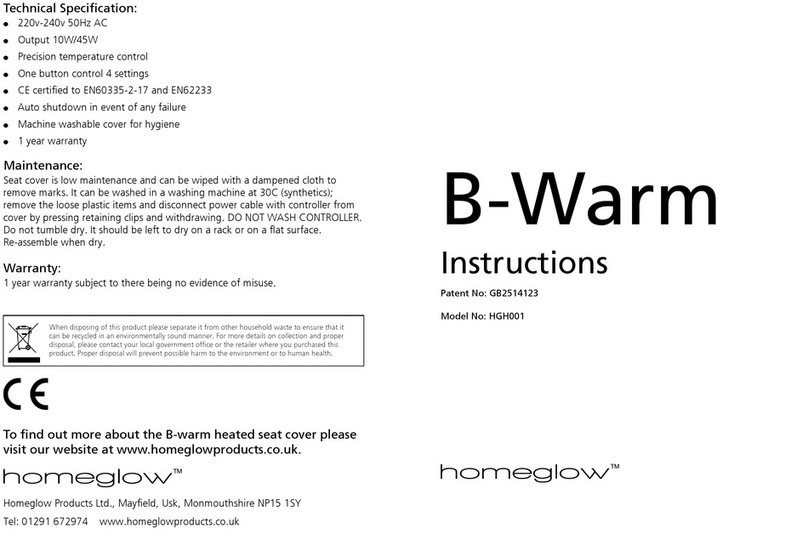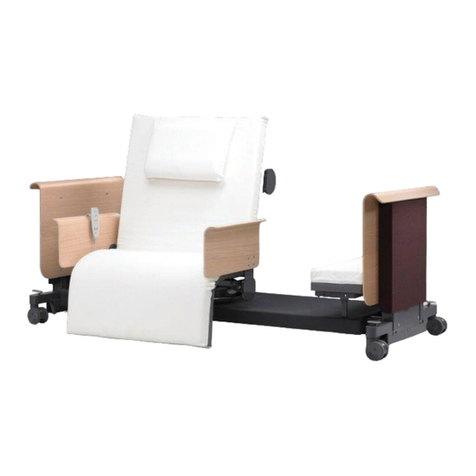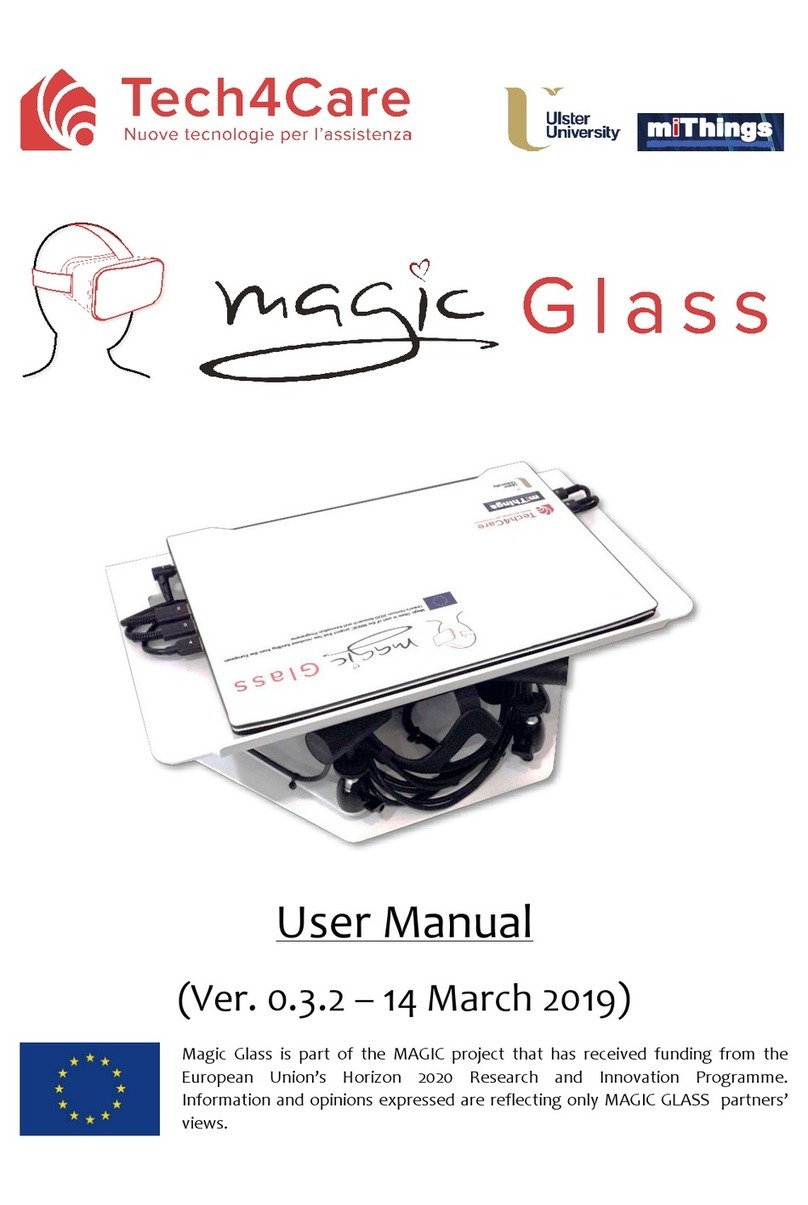BMC LH1 User manual

User Manual
Tube
Heated Breathing Tube
LH1
0123

LH1 Heated Breathing Tube User Manual
Table of Contents
1. Device Symbols ...................................................................................................... 1
2. Warning, Caution and Important Tip ....................................................................... 2
3. Intended Use ......................................................................................................... 2
4. Specifications ......................................................................................................... 3
5. Features................................................................................................................. 4
6. First Time Setup ..................................................................................................... 4
6.1 Connecting the Heated Breathing Tube to the Device..................................... 5
6.2 Removing the Heated Breathing Tube from the Device .................................. 6
6.3 Requirements for breathing gas supply device ............................................... 6
7. Cleaning and Maintenance ...................................................................................... 6
7.1 Cleaning the Heated Breathing Tube ............................................................. 7
7.2 Disinfection of the Heated Breathing Tube..................................................... 7
8. Disposal ................................................................................................................. 8
9. Technical Support................................................................................................... 8
10. EMC Requirements................................................................................................ 8
11. Limited Warranty .................................................................................................12

LH1 Heated Breathing Tube User Manual
1 / 12
1. Device Symbols
Manufacturer
Follow Instructions for Use
Operating Instructions
Type BF Applied Part
DC Power
IPX2
Dripping (15º tilted)
Lot number
Do not use the product if the package is damaged
WEEE Marking
Use-by date
Logo of BMC Medical Co., Ltd.

LH1 Heated Breathing Tube User Manual
2 / 12
2. Warning, Caution and Important Tip
WARNING!
Indicate the possibility of injury to the user or operator.
CAUTION!
Indicate the possibility of damage to the device.
IMPORTANT TIP!
Place emphasis on an operating characteristic.
Warnings, Cautions, and Important Tips appear throughout this manual as they apply.
3. Intended Use
The LH1 Heated Breathing Tube (Heated Breathing Tube for short) is heated air tubing intended for
incorporation into respiratory therapy devices and humidifiers with conical ISO connectors (ISO 5356).
And is intended to reducing or eliminating water condensation and/or pooling of water in the Heated
Breathing Tube, and problems associated with such.
The Heated Breathing Tube is indicated for non-invasive respiratory therapy in the home, hospital or
sleep-lab setting by a single adult patient. It can also be used in conjunction with supplemental Oxygen.
WARNINGS!
• This device is intended for adult use only.
• This product is not intended for patients with upper respiratory tract bypass.
• The device is intended for use by a single patient only.
•The instructions in this manual are not intended to supersede established medical protocols.
• When the device is connected with other devices to constitute the ME system, it shall meet the relevant
requirements of IEC 60601-1-1 for the safety of medical electrical system.
•This device has no alarm function and is not applicable to the case where the alarm is required.
•Images shown are indicative only. If there is inconsistency between the image and actual product, the
actual product shall govern.

LH1 Heated Breathing Tube User Manual
3 / 12
4. Specifications
Inner Diameter
19 mm
Length
The length under static (unstressed) condition in the horizontal plane is
1.8 m
Margin of Error: ±10%
Environmental
Conditions
Operation
Transport and
Storage
Temperature
5°C ~35°C
-25°C ~70°C
Humidity
15% ~93%,
Non-condensing
15% ~93%,
Non-condensing
Atmospheric
Pressure
760 ~1060 hPa
760 ~1060 hPa
Power Supply
DC Voltage
Load Power
24 V
18 W
Air outlet
Temperature
At temperature 5°C ~30°C, air outlet temperature is less than 41°C.
Resistance to flow at
rated flow
30 l/min: < 0.06 hPa/l/min
Compliance standards
60 hPa: < 5 ml/hPa
Manufacture Date
Refer to the nameplate
Service Life
The product’s service life is six months if the use, maintenance,
cleaning and disinfection are in strict accordance with the User Manual.
Validity Term
3 years
Type of Protection
against Electric Shock
Not Applicable
Degree of Protection
against Electric Shock
Type BF Applied Part
Degree of
Protection
against Ingress
of Water
IPX2
Note:
The nominal rated flow of the product is 60 L/min, 0.2 kPa.

LH1 Heated Breathing Tube User Manual
4 / 12
5. Features
The Heated Breathing Tube is composed of threaded tubing, adapter, heated wire and its port.
The structure of the Heated Breathing Tube is shown in Fig. 5-1.
Breathing gas
supply device
connector
Power connector
Mask connector
Dangling
Dangling
24V -
24V +
Fig. 5-1
WARNING!
• This product should only be connected with mask type non-invasive breathing gas supply device or
positive pressure breathing gas supply device (hereinafter referred to as breathing gas supply device)
produced or authorized for use by BMC or recommended by prescription doctor. The use of incorrect
breathing gas supply device may affect the the effectiveness of the treatment.
6. First Time Setup
WARNINGS!
• When the indoor temperature exceeds 30°C, disconnect power supply of the Heated Breathing Tube, so
as to avoid the high temperature of airflow and irritate the airway of patients.
• When the indoor humidity exceeds 80%, do not use the Heated Breathing Tube to prevent any
condensation in the tubing from entering the patient's airway.
• Do not cover the Heated Breathing Tube with anything, including textile heat insulation sleeves, plastic
sleeves, blankets, etc., to avoid excessive air temperature and irritate the airway of patients.
• Do not use the Heated Breathing Tube without airflow.
• When accidents occur during normal use, the product should be stopped immediately and appropriate
emergency and corrective measures should be taken.
• If the DC voltage exceeds the range (refer to Part 4 "Power Supply"), the product will not work properly.
• If the Heated Breathing Tube is damaged (such as broken hole, kink, tear, exposed heated wire, etc.) or
poor function, please do not repair and use it by yourself and replace it immediately.

LH1 Heated Breathing Tube User Manual
5 / 12
CAUTION!
•Check the integrity of the product packaging, if the package is found damaged, please do not use this
product.
• When using the product, make sure that patients are closely monitored.
• Check the product regularly and replace the product immediately if it is found to be contaminated or no
longer applicable to its use intention.
• Do not pile too long tubs on the head of the bed, it is possible to entangle the head of the patient or neck
in a deep sleep. The tubing should not be covered by the sheet or affected by the heating source (such as
electric blanket), otherwise it may cause the deformation of the tubing to be dangerous.
• When the product is not connected to the patient, avoid foreign matter entering the inside of the Heated
Breathing Tube.
• Before each use, the tubing should be checked for damage or foreign matter. If so, please replace the
tubing immediately. Check whether the mask system is sealed.
• When the product is discarded, the treatment method of the high-molecular medical device shall be
carried out for the harmless treatment.
• When connecting or disassembling Heated Breathing Tube with breathing gas supply device or nasal
cannula, be sure to focus on the adapter and do not pull the threaded tubing.
• When using the Heated Breathing Tube, be sure to use with the humidifier, so as to avoid the gas
temperature is too high.
• When using electrical products, you follow the usual safety measures.
• Do not use (microwave) oven, fan or any other appliances to dry the cleaned Heated Breathing Tube.
Please refer to the cleaning instructions.
• Do not use a brush or any other object to clean the inner wall of the Heated Breathing Tube.
• Do not disassemble or intentionally damage the Heated Breathing Tube.
• When you want to permanently discard the Heated Breathing Tube, please clearly mark the used Heated
Breathing Tube to avoid misuse by other patients.
• Do not use this product in an environment with flammable gases (such as narcotics) to avoid explosion.
6.1 Connecting the Heated Breathing Tube to the Device
(1) Unpack and take out the product.
(2) Connect the machine end port of Heated Breathing Tube and breathing gas supply device.
(3) Connect the power connector of Heated Breathing Tube and the socket of breathing gas supply device
as shown in Fig. 6-1.

LH1 Heated Breathing Tube User Manual
6 / 12
Fig. 6-1
(4) Connect the mask connector of Heated Breathing Tube and mask.
CAUTION!
•Before each use of the product, test the product according to the instructions of the device manufacturer
to ensure that the product is compatible with the device and that the product is free of air leakage and
blockage.
6.2 Removing the Heated Breathing Tube from the Device
(1) Close the breathing gas supply device.
(2) Press and hold the power connector the Heated Breathing Tube to separate it from the socket on the
breathing gas supply device.
(3) Disconnect the Heated Breathing Tube from breathing gas supply device and accessories.
6.3 Requirements for breathing gas supply device
(1) The breathing gas supply device should have current limitation when supplying power to the Heated
Breathing Tube, and the output power supply should meet the requirements of "Power Supply" in part 4 of
this manual.
(2) The socket on the breathing gas supply device must match the power connector of the Heated
Breathing Tube.
7. Cleaning and Maintenance
WARNINGS!
• Regular cleaning of the device and its accessories is very important for the prevention of respiratory
infections.
• To avoid electric shock, always unplug the device before cleaning.
• Use mild soap that is nontoxic to humans.
•Do not use irritating soap, detergent, solvent or alcohol clean the tubing.
•Do not reconnect the Heated Breathing Tube until it is completely dry.
Power connector
socket on the breathing gas supply device

LH1 Heated Breathing Tube User Manual
7 / 12
•Do not wash Heated Breathing Tube with dish-washing machine.
•The power connector of the Heated Breathing Tube should not have any contact with any liquid and a
disposable medical cleaning cloth or paper is used to remove any visible dirt.
7.1 Cleaning the Heated Breathing Tube
(1) Before cleaning, remove all connecting parts, then clean the tubing in warm water which contains
washing liquid, and then rinse it in clean water thoroughly.
(2) Tap gently to remove excess moisture from the connector port.
(3) Suspend the Heated Breathing Tube with openings at both ends facing the floor.
(4) Air-dry the tubing, and avoid direct sunlight.
WARNINGS!
• Please wash by hand.
• If the Heated Breathing Tube is damaged (such as broken hole, tear, exposed heated wire, etc.) or poor
function, please do not repair and use it by yourself and replace it immediately.
• Failure to clean in accordance with the Manual may result in reduced performance of the Heated
Breathing Tube or reduced product life.
7.2 Disinfection of the Heated Breathing Tube
If the cleaning instructions in Clause 7.1 are strictly followed, it is generally not necessary to disinfect the
Heated Breathing Tube. When the product is contaminated, please clean it according to the cleaning
method in Clause 7.1, before disinfecting according to the following scheme.
(1) Immerse the Heated Breathing Tube in 0.55% O-phthalaldehyde for 12 min.
(2) After immersing, rinse it in clean water thoroughly.
(3) Tap gently to remove excess moisture from the connector port.
(4) Suspend the Heated Breathing Tube with the openings at both ends facing the floor.
(5) Air-dry the tubing, and avoid direct sunlight.
WARNING!
• No sterilization is required by the product.
CAUTIONS!
• BMC has used the following disinfectants to verify the disinfection cycle of the Heated Breathing Tube,
and the number of cycles of verified disinfection is 100 times.
• Disinfectants generally damage the surface of materials and shorten the service life of the product.
Attention should be paid to the instructions for use of the disinfectants; the right ones should be selected
as applicable as possible, and the recommendations of the disinfectant manufacturer should be followed.
• If the Heated Breathing Tube is found to have any damage (such as fracture and rupture) after
disinfection, it needs to be replaced in time. It is normal for the Heated Breathing Tube to become slightly
discolored.
• After disinfection, please be sure to always rinse it thoroughly with clear water to prevent residual
disinfectant from damaging skin and respiratory tractor causing allergic reaction.

LH1 Heated Breathing Tube User Manual
8 / 12
8. Disposal
When the device reaches the end of its service life, dispose of the device and packaging in accordance with
local laws and regulations.
9. Technical Support
Please contact BMC directly if you need the technical documents of the Heated Breathing Tube for certain
purposes such as maintenance or connection to other equipment. BMC will provide the technical
documents in whole or in part according to your needs.
10. EMC Requirements
Guidance and manufacturer's declaration - electromagnetic emissions
The device is intended for use in the electromagnetic environment specified below. The user of the
device should ensure that it is used in such an environment.
Emissions Test
Compliance
Electromagnetic Environment - Guidance
RF emissions
CISPR 11
Group 1
The device uses RF energy only for its internal
function. Therefore its RF emissions are very low
and are not likely to cause any interference in
nearby electronic equipment
RF emissions
CISPR 11
Class B
The device is suitable for use in all
establishments including domestic
establishments and those directly connected to
the public low-voltage power supply network
that supplies buildings used for domestic
purposes
Harmonic emissions
IEC 61000-3-2
N/A
Voltage fluctuations
/ flicker emissions
IEC 61000-3-3
N/A
WARNINGS!
• During operation of the device, due to electrostatic interference, the following phenomena may occur:
(1) Temporary loss of function or degradation of performance, such as abnormal screen display, etc. The
device will recover to normal after being restarted;
(2) Automatic restart of the device. These phenomena will not affect the normal use of the device, and will
not cause permanent performance degradation or function loss of the device.

LH1 Heated Breathing Tube User Manual
9 / 12
Guidance and manufacturer's declaration - electromagnetic immunity
The device is intended for use in the electromagnetic environment specified below. The user of the
device should make sure that it is used in such an environment.
Immunity
Test
IEC 60601 Test
Level
Compliance Level
Electromagnetic
Environment - Guidance
Electrostatic
discharge
(ESD)
IEC
61000-4-2
± 8 kV contact
± 15 kV air
± 8 kV contact
± 15 kV air
Floor should be wood, concrete
or ceramic tile. If floors are
covered with synthetic material,
the relative humidity should be at
least 30%
Electrical fast
transient /
burst
IEC
61000-4-4
± 2 kV for
power supply lines
± 2 kV for
power supply lines
Mains power quality should be
that of a typical commercial or
hospital environment
Surge
IEC
61000-4-5
± 1 kV
Line (s) to line (s)
± 1 kV
Line (s) to line (s)
Mains power quality should be
that of a typical commercial or
hospital environment
Voltage dips,
short
interruptions
and voltage
variations on
power supply
input lines
IEC
61000-4-11
0%
UT
; 0.5 cycle
At 0°, 45°, 90°,
135°, 180°, 225°,
270° and 315°
0%
UT
;1 cycle
70%
UT
; 25 / 30
cycles
At 0°
0%
UT
; 250 / 300
cycles
0%
UT
; 0.5 cycle
At 0°, 45°, 90°,
135°, 180°, 225°,
270° and 315°
0%
UT
; 1 cycle
70%
UT
; 25 / 30
cycles
At 0°
0%
UT
; 250 / 300
cycles
Mains power quality should be
that of a typical commercial or
hospital environment. If the user
of the device requires continued
operation during power mains
interruptions, it is recommended
that the device be powered from
an uninterruptible power supply
or a battery
Power
frequency (50
/ 60 Hz)
magnetic
field
IEC
61000-4-8
30 A/m
30 A/m
Power frequency magnetic fields
should be at levels characteristic
of a typical location in a typical
commercial or hospital
environment
Note:
UT
is the AC mains voltage prior to application of the test level.

LH1 Heated Breathing Tube User Manual
10 / 12
Guidance and manufacturer's declaration - electromagnetic immunity
The device is intended for use in the electromagnetic environment specified below. The user of the
device should make sure that it is used in such an environment.
Immunity
Test
IEC 60601
Test Level
Compliance
Level
Electromagnetic Environment -
Guidance
Conducted
RF
IEC
61000-4-6
Radiated RF
IEC
61000-4-3
3 V (Effective
value)
150 kHz ~80
MHz
3 V/m
80 MHz ~2.5
GHz
3 V (Effective
value)
3 V/m
Portable and mobile RF communications
equipment should be used no closer to
any part of the device, including cables,
than the recommended separation
distance calculated from the equation
applicable to the frequency of the
transmitter.
Recommended separation distance
pd
2.1
pd
2.1
80 MHz ~800 MHz
pd
3.2
800 MHz ~2.5 GHz
Where
p
is the maximum output power
rating of the transmitter in watts (W)
according to the transmitter
manufacturer and
d
is the recommended
separation distance in meters (m).
Field strengths from fixed RF transmitter,
as determined by an electromagnetic
site survey, ashould be less than the
compliance level in each frequency
range. bInterference may occur in the
vicinity of equipment marked with the
following symbol:
Note 1: At 80 MHz and 800 MHz, the higher frequency range applied.
Note 2: These guidelines may not apply in all situations. Electromagnetic propagation is affected by
absorption and reflection from structures, objects and people.
aField strengths from fixed transmitters, such as base stations for radio (cellular / cordless)
telephones and land mobile radios, amateur radio, AM and FM radio broadcast and TV broadcast
cannot be predicted theoretically with accuracy. To assess the electromagnetic environment due to
fixed RF transmitters, an electromagnetic site survey should be considered. If the measured field
strength in the location in which the device is used exceeds the applicable RF compliance level above,
the device should be observed to verify normal operation. If abnormal performance is observed,
additional measures may be necessary, such as re-orienting or relocating the device.
bOver the frequency range 150 kHz to 80 MHz, the field strengths should be less than 3 V/m.

LH1 Heated Breathing Tube User Manual
11 / 12
Recommended separation distances between portable and mobile RF communications
equipment and the device
The device is intended for use in an electromagnetic environment in which radiated RF disturbances
are controlled. The customer or the user of the device can help prevent electromagnetic interference
by maintaining a minimum distance between portable and mobile RF communications equipment
(transmitters) and the device as recommended below, according to the maximum output power of the
communications equipment.
Rated maximum
output of
transmitter
W
150 kHz ~80 MHz
pd
2.1
80 MHz ~800 MHz
pd
2.1
800 MHz ~2.5 GHz
pd
3.2
0.01
0.12
0.12
0.23
0.1
0.38
0.38
0.73
1
1.2
1.2
2.3
10
3.80
3.80
7.28
100
12
12
23
Note 1: At 80 MHz and 800 MHz, the higher frequency range applied.
Note 2: These guidelines may not apply in all situations. Electromagnetic propagation is affected by
absorption and reflection from structures, objects and people.
For transmitters rated at a maximum output power not listed above, the recommended separation
distance
d
in meters (m) can be estimated using the equation applicable to the frequency of the
transmitter, where
P
is the maximum output power rating of the transmitter in watts (W) according to
the transmitter manufacturer.
WARNINGS!
• This device should not be used in the vicinity or on the top of other electronic equipment such as cell
phone, transceiver or radio control products. If you have to do so, the device should be observed to verify
normal operation.
• The use of accessories and power cord other than those specified, with the exception of cables sold by
the manufacturer of the equipment or system as replacement parts for internal components, may result in
increased emissions or decreased immunity of the equipment or system.
•Even if other equipment meets the emission requirements of corresponding national standards, the
product may still be interfered by other equipment.
•Do not bring the device or accessories into a Magnetic Resonance (MR) environment as it may cause
unacceptable risk to the patient or damage to the device or MR medical devices. The device and
accessories have not been evaluated for safety in an MR environment.
•Do not use the device or accessories in an environment with electromagnetic equipment such as CT
scanners, Diathermy, RFID and electromagnetic security systems (metal detectors) as it may cause
unacceptable risk to the patient or damage to the device. Some electromagnetic sources may not be
apparent, if you notice any unexplained changes in the performance of this device, if it is making unusual
or harsh sounds, disconnect the power cord and discontinue use. Contact your home care provider.
•When the product is exposed to soldering, electrosurgery, defibrillation, X-ray (γ ray), infrared radiation,
transient electromagnetic field, including nuclear magnetic resonance (MRI) and radio interference
environment, the product may be damaged.

LH1 Heated Breathing Tube User Manual
12 / 12
11. Limited Warranty
BMC Medical Co., Ltd. warrants that the device shall be free from defects of workmanship and materials
and will perform in accordance with the product specifications for three (3) months from the date of sale
by BMC Medical Co., Ltd. to the dealer. If the product fails to perform in accordance with the product
specifications, BMC Medical Co., Ltd. will repair or replace, at its option, the defective material or part. BMC
Medical Co., Ltd. will pay customary freight charges from BMC Medical Co., Ltd. to the dealer location only.
This warranty does not cover damage caused by accident, misuse, abuse, alteration and other defects not
related to material or workmanship.
BMC MEDICAL CO., LTD. DISCLAIMS ALL LIABILITY FOR ECONOMIC LOSS, LOSS OF PROFITS,
OVERHEAD OR CONSEQUENTIAL DAMAGES WHICH MAY BE CLAIMED TO ARISE FROM ANY SALE OR USE
OF THIS PRODUCT. SOME STATES DO NOT ALLOW THE EXCLUSION OR LIMITATION OF INCIDENTAL OR
CONSEQUENTIAL DAMAGES, SO THE ABOVE LIMITATION OR EXCLUSION MAY NOT APPLY TO YOU.
To exercise the rights under this warranty, contact the local authorized dealers or:
MANUFACTURER:
BMC Medical Co., Ltd.
Room 110 Tower A Fengyu Building, No. 115 Fucheng Road, Haidian, 100036 Beijing,
PEOPLE’S REPUBLIC OF CHINA
URL: en.bmc-medical.com
Tel: +86-10-51663880
Fax: +86-10-51663880 Ext. 810
Contract Manufacturer:
BMC (Tianjin) Medical Co., Ltd.
2/F North Area and 3/F, Building No.4, No.1 Xinxing Road, Wuqing District, (301700)
Tianjin, P.R.China
Tel: +86-22-82939881
UKAR:
Wellkang Ltd.
16 Castle St, Dover, CT16 1PW, England, UK
V1.2
Issue date: December 1, 2021

391937
Table of contents
Other BMC Medical Equipment manuals
Popular Medical Equipment manuals by other brands
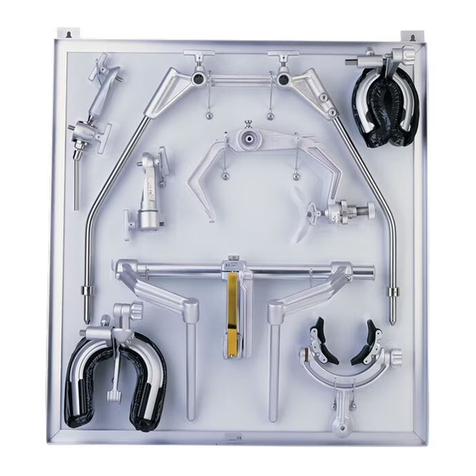
Integra
Integra MAYFIELD A1023 instruction manual
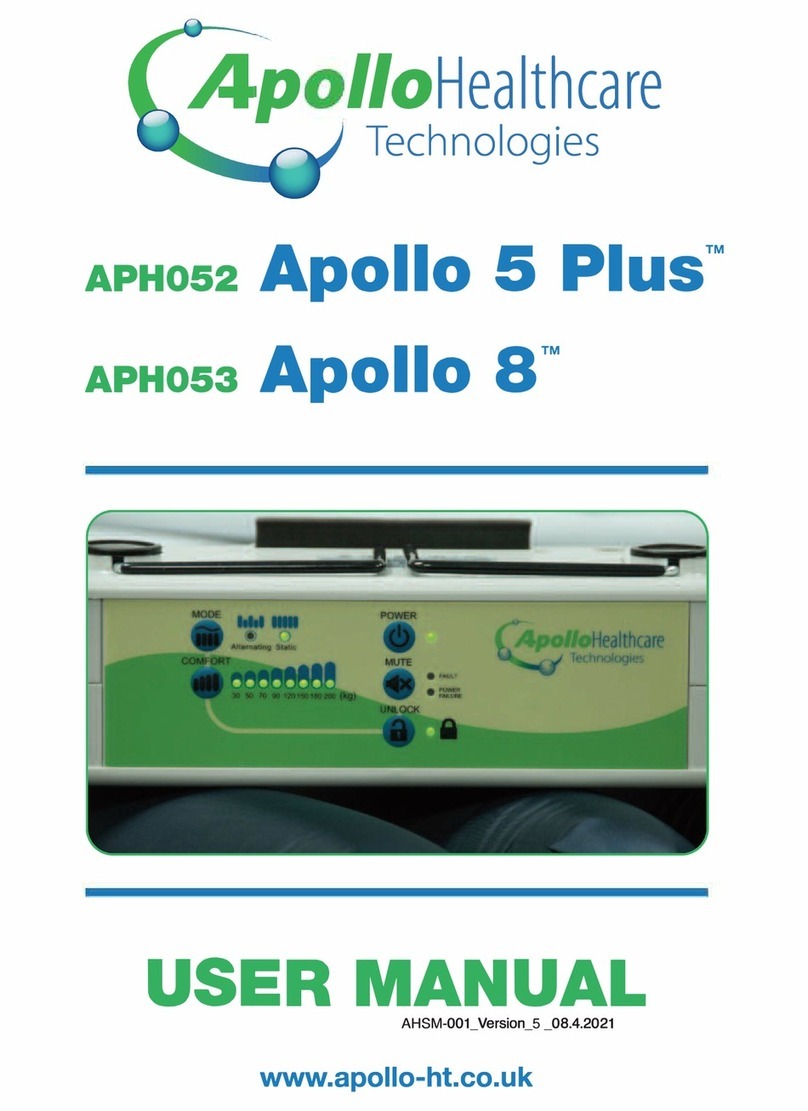
Apollo Healthcare Technologies Limited
Apollo Healthcare Technologies Limited Apollo 5 Plus APHos2 user manual
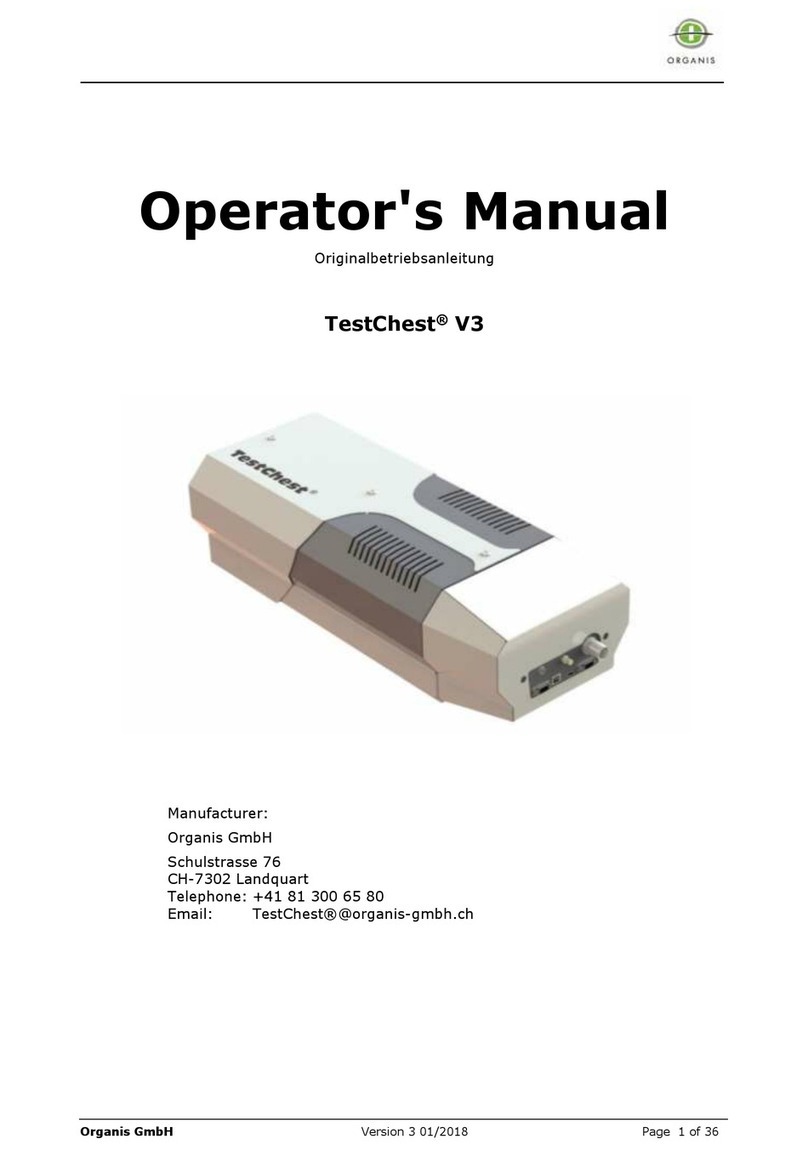
Organis
Organis TestChest V3 Operator's manual
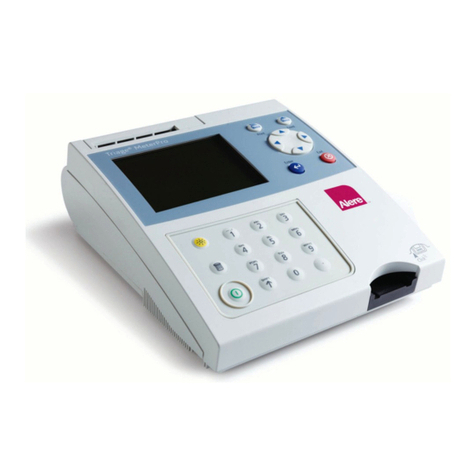
Alere
Alere Triage Quick reference guide

EASTMAN
EASTMAN Kodak X-Omat 1000 installation instructions

Huntleigh
Huntleigh Smartsigns MiniPulse Instructions for use
